Xiaoyu
Xu
Image
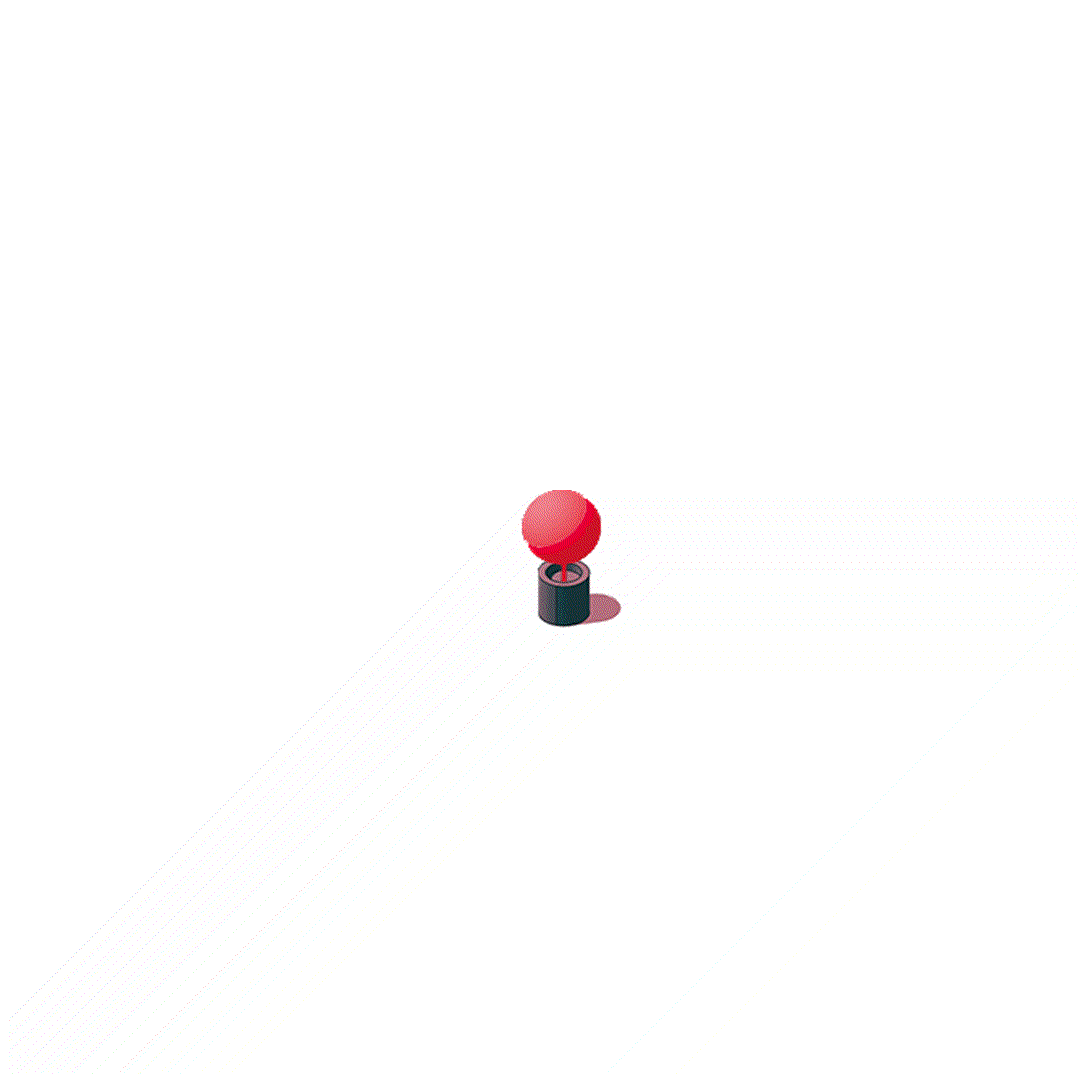
Image
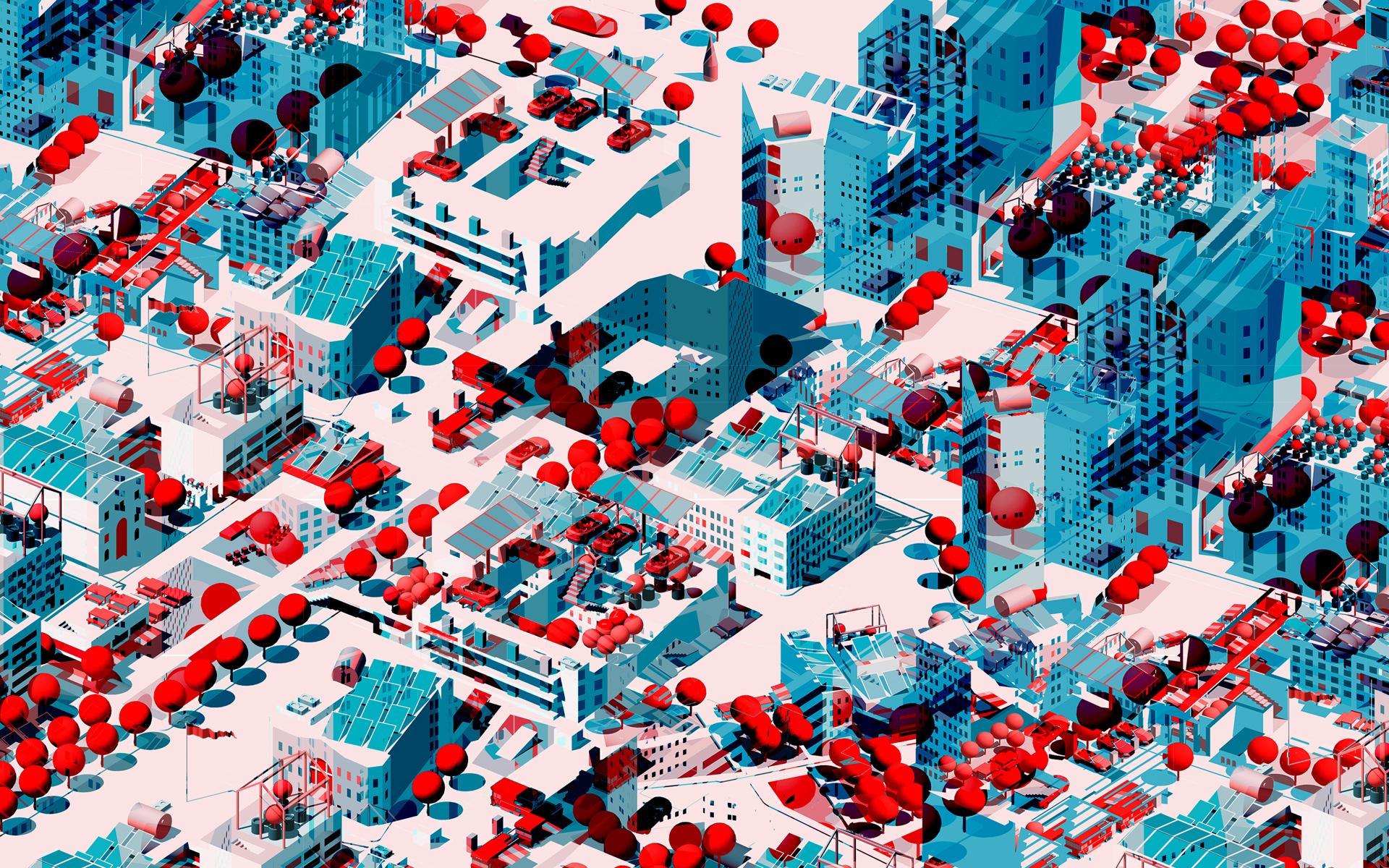
ENERGY CONVERGENCE
Energy Convergence
The current state of our urban systems and infrastructure is untenable in light of ongoing urbanization, population growth and complexity of modern life, including the problem of the city’s deactivation. Current systems lack the level of integration and shared intelligence that our technology advancements allow and modern life requires.
And if we understand landscape and its systems as inherently integrated and self-sustaining and essential to the optimal functioning of our cities, then we can position urban landscapes as the foundation and framework for all future urban system redesign and development.
Image

Energy-station-channel
This thesis regards all urban systems and living systems as forms of energy flow and focuses on channels and stations of energy flow. The question is, How to make an urban area have vitality with a sustainable way of operation? How can we construct a station-channel network with an internal energy conversion system that solves the problems of urban vitality and energy waste?
Framing concepts
This thesis regards all urban systems and living systems as forms of energy flow. Specifically it focuses on channels and stations of energy flow, and questions how this convergence can lead to new definitions of urban form and function.
Image
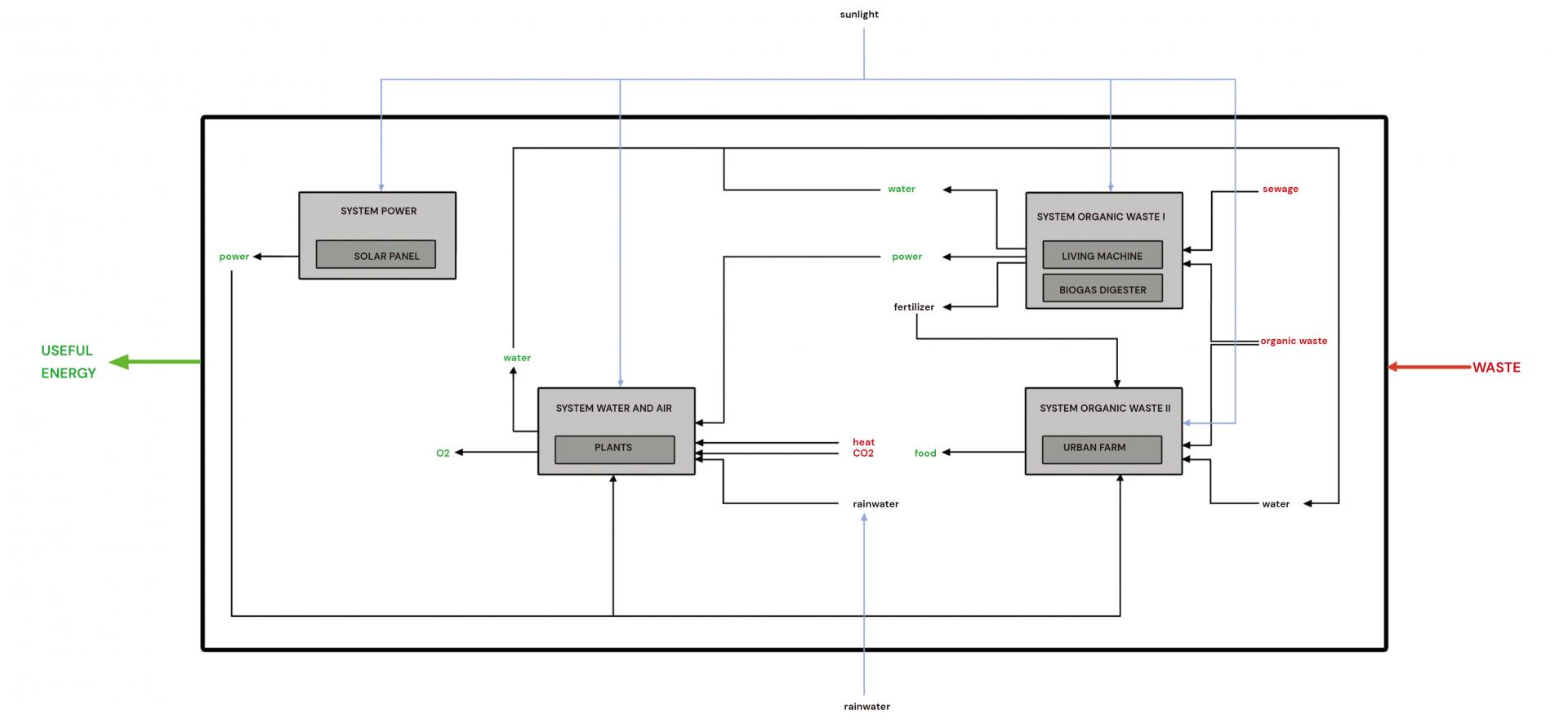
The energy convergence system
The whole system includes four systems I designed which also include several sub-systems that convert different energy flows. You will find that the input energy forms are only sunlight, rainwater and waste while the output energy is useful energy. It means this is a self-sustaining system which solves the problem of waste and provides the city with useful energy.
Image
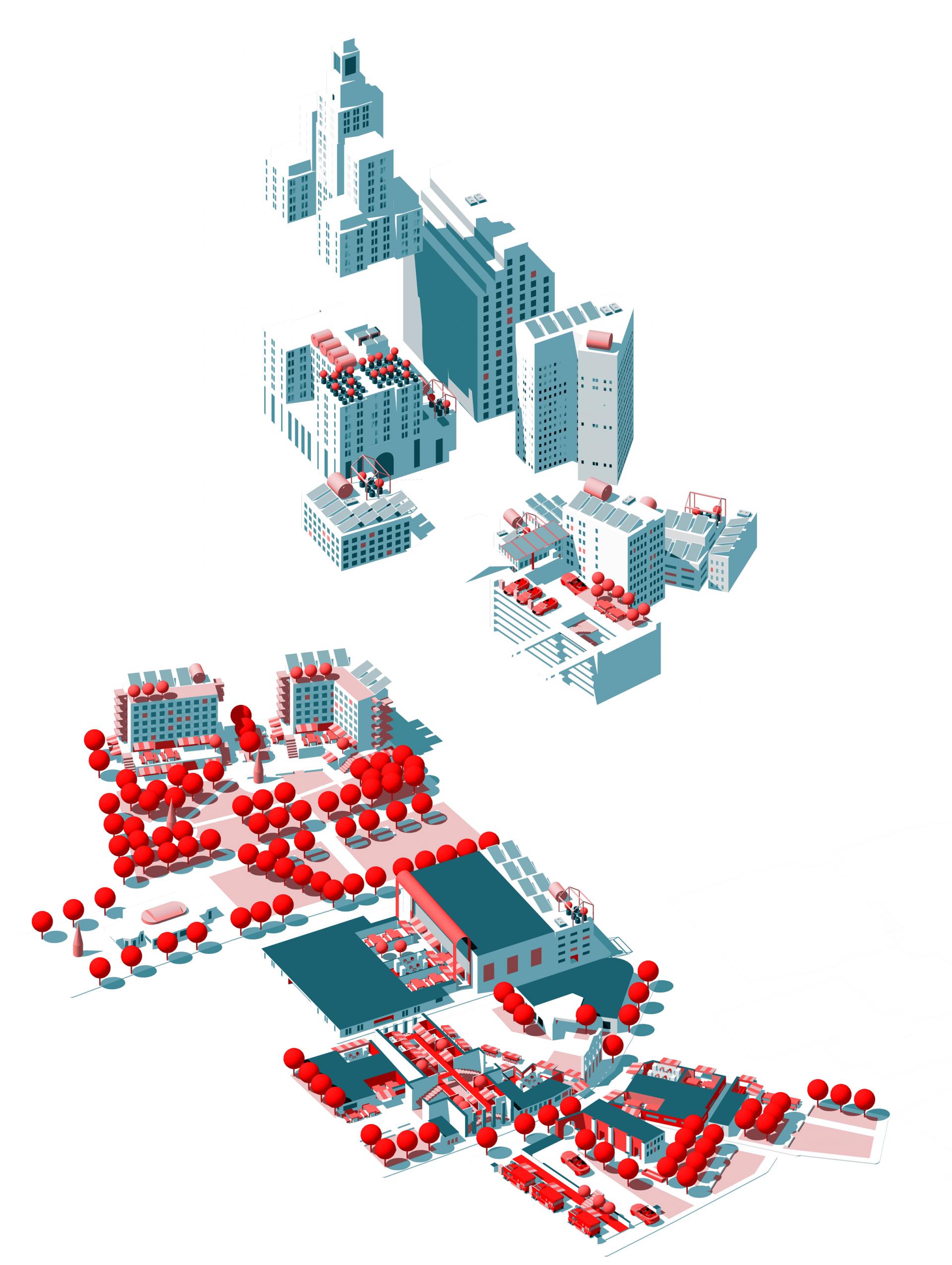
Business Region-Indoor Space And Ground Floor
For urban spaces similar to business districts, they lack public space, make it difficult to use buildings’ high floors, and lack urban vitality. But by using indoor space and ground floors, we can still build a better station-channel network to create a system that improves urban vitality.
Image
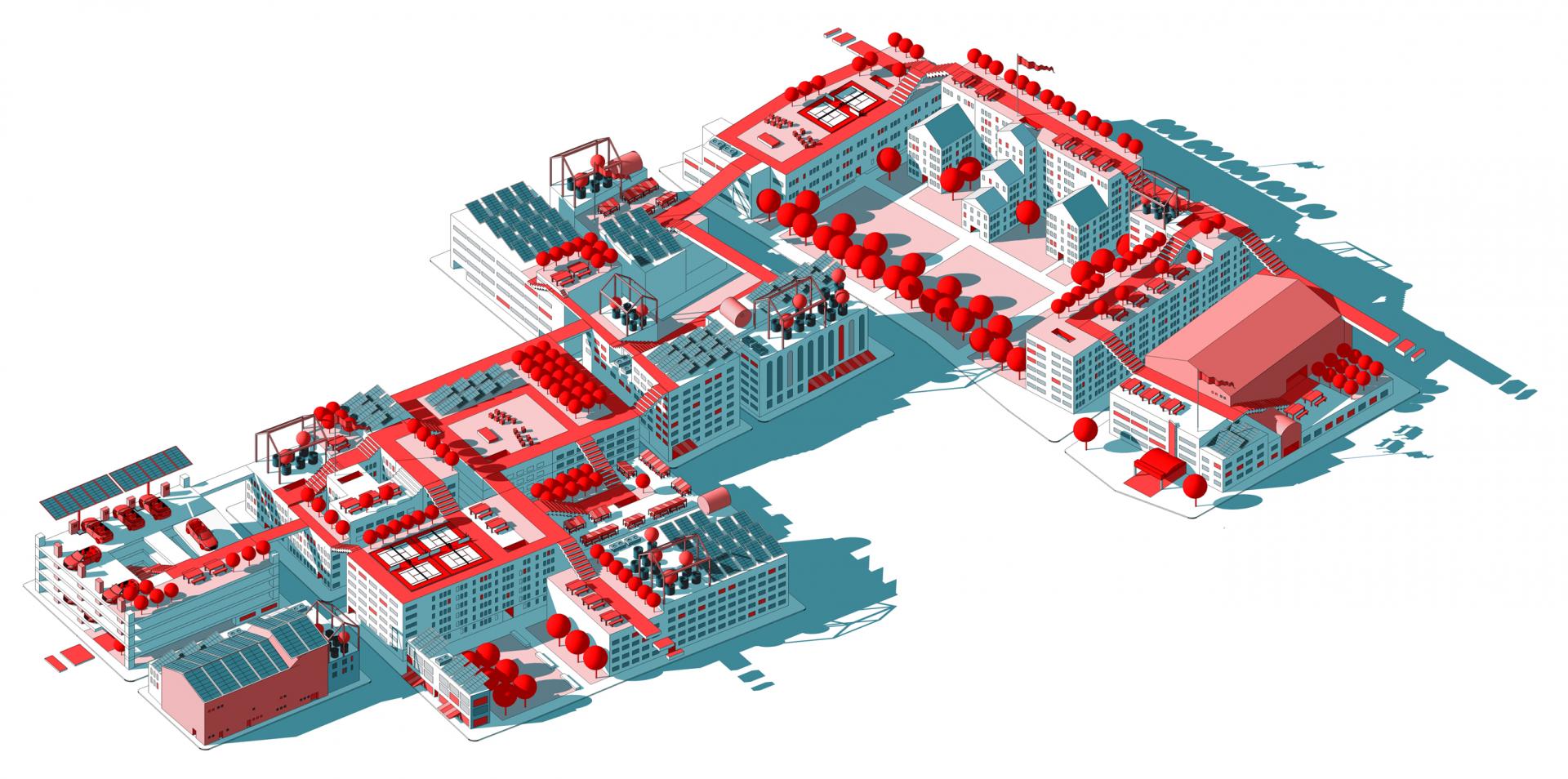
Commercial-Cultural Region-Roof and High Floor
For urban spaces similar to commercial streets, they lack public spaces, stations that create vitality are scattered, and high floors cannot be fully utilized, thus lacking urban vitality. But by using roofs and high floors we can build a better three-dimensional station-channel network to create a system that improves urban vitality. Through the roof layers, they have more thematic and more closely connected channels and have richer activities on the roofs.
Image
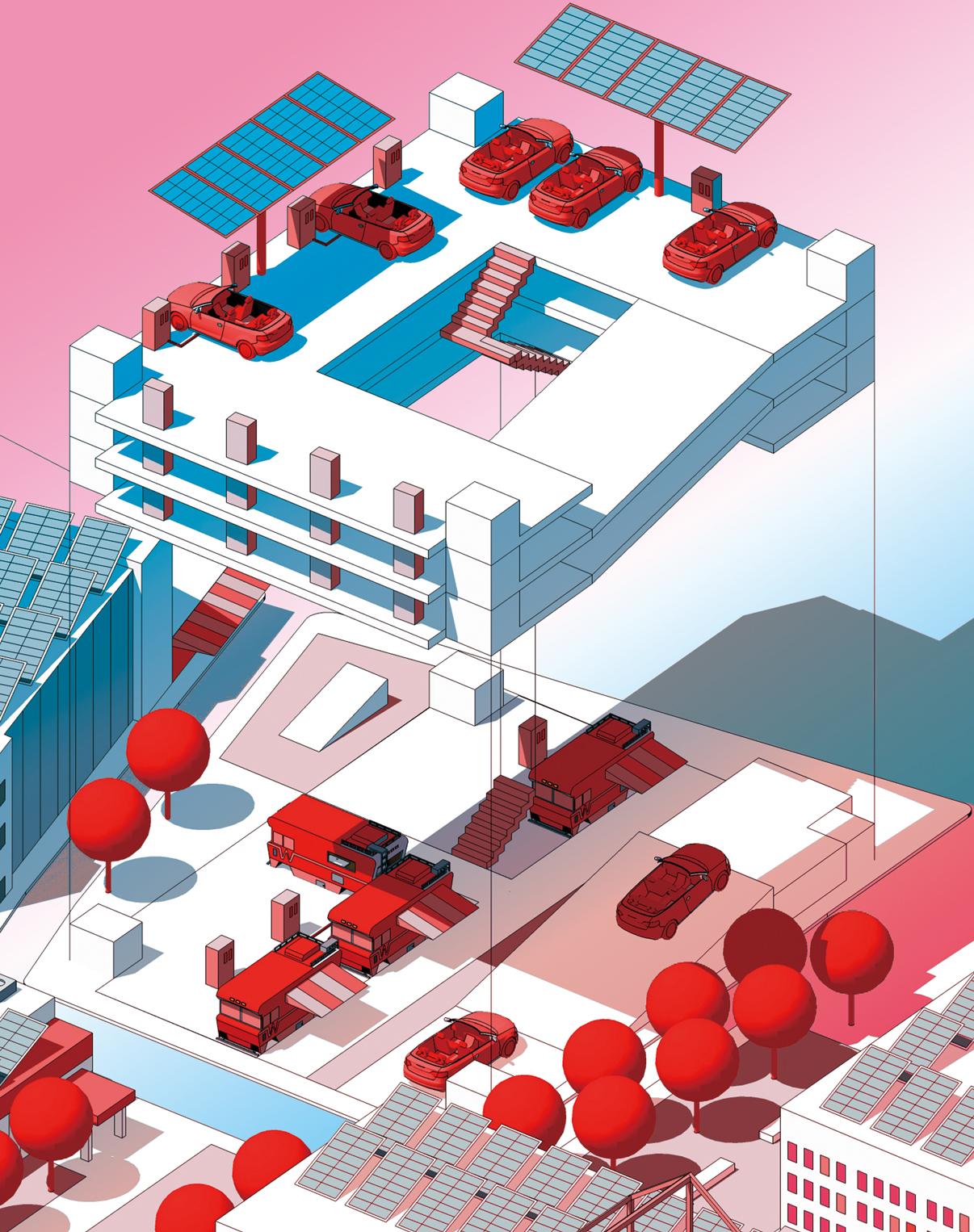
Parking Lot Building-Vertical Transfer Station
Parking lot buildings are used as transfer stations connecting the roof layer and the ground floor layer, and its function has also changed from pure parking to public activity space, whether it is on the roof (solar charging piles with driver's rest area) or ground floors (snack cars in Charging while operating externally).
How to make an urban area have vitality with a sustainable way of operation?
This thesis focuses on solving the problem of urban vitality. By studying the impact of landscapes on the flow of people in the city, find ways to improve people’s activities within public.It studys the interconnections of energy flows in the form of waste, water, power, light, food, etc., and try to integrate these to people’s activities.
Image
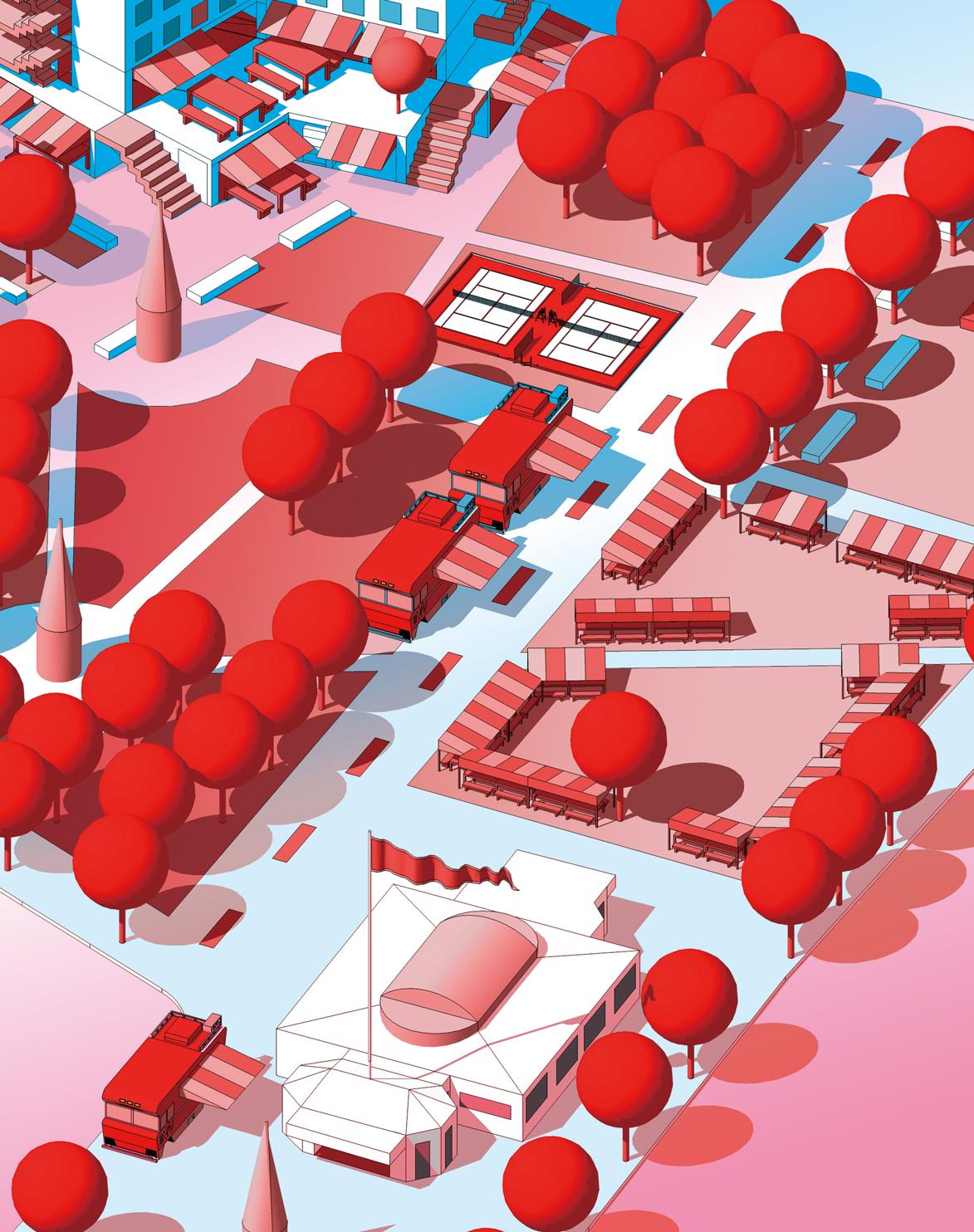
Center Park Region-Public Space
Public space strengthens the vitality of the surrounding area, whether it is the strengthening of the city park to the entire city or the strengthening of the building's auxiliary green space. For central parks, they will be important nodes of the city's large station-channel network, and the corresponding functions will also serve the entire city, such as local food markets, sports ground, etc.
Image
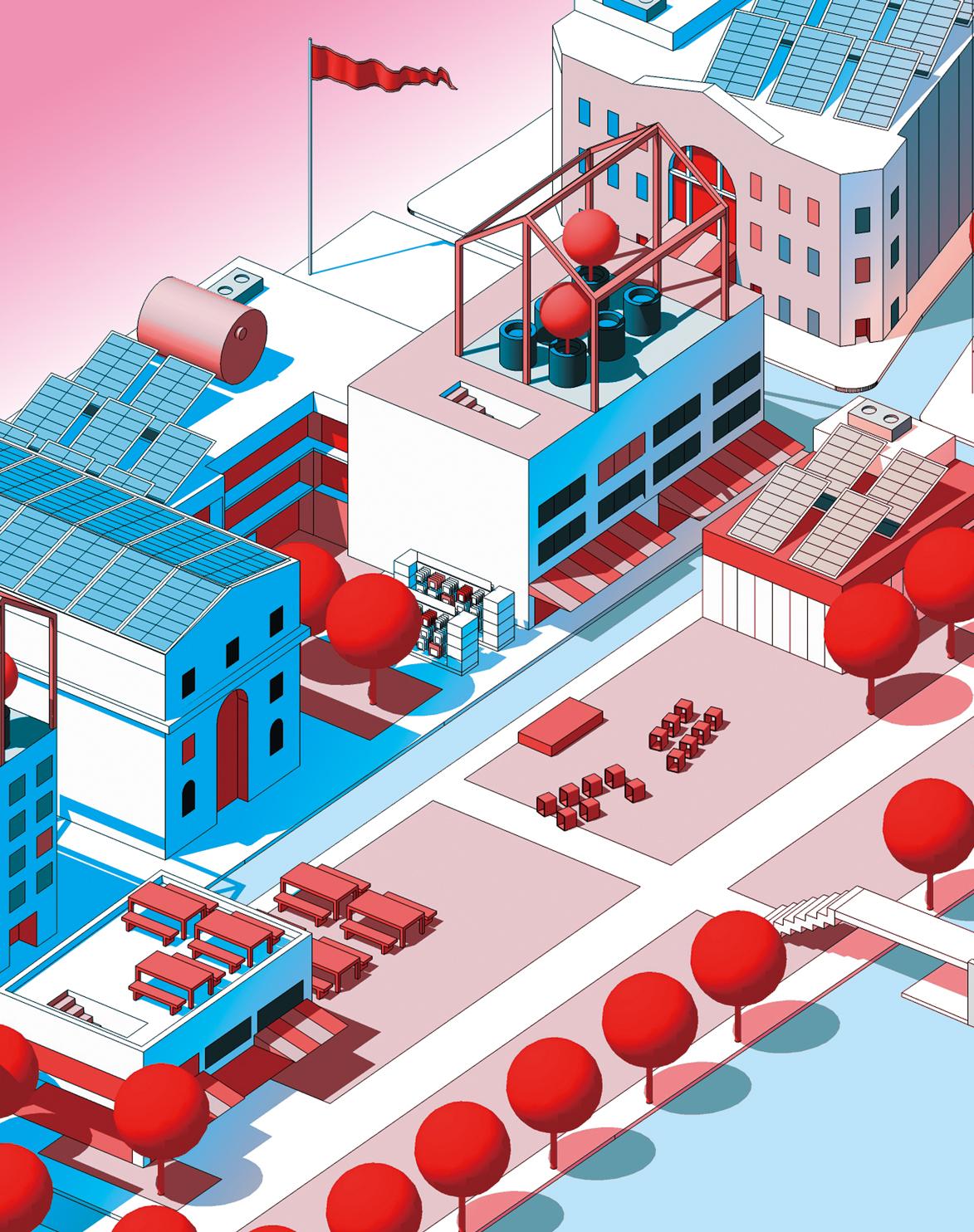
Landscape-Public Space
Public space enhances the vitality of surrounding buildings because the landscape creates suitable spaces for channels and stations. For example, outdoor dining for restaurants, outdoor lectures for art facilities, outdoor stalls for stores.
Image
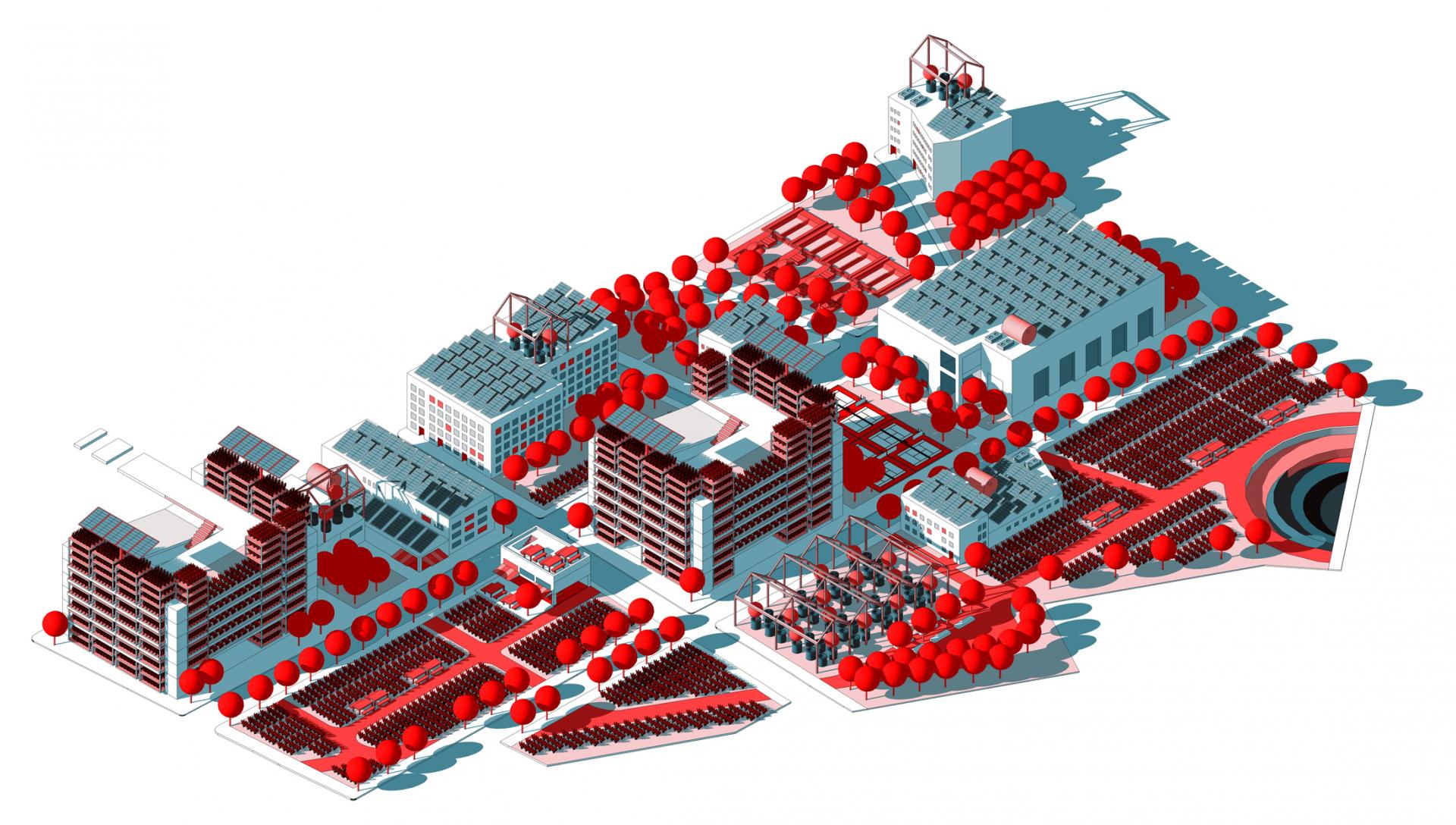
Born and raised in Shanghai, China, Xiaoyu Xu is a designer in landscape architecture and urban design areas. He holds a Bachelor of Engineering in Urban and Rural Planning from Beijing Forestry University and a Master of Landscape Architecture from Rhode Island School of Design. He focuses on the construction of landscapes and urban systems, including the sustainable cycle of energy in cities, the impact of urban form on urban vitality, and vertical cities.